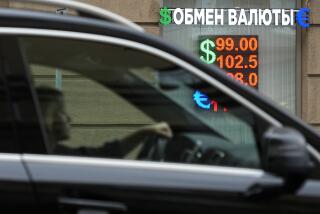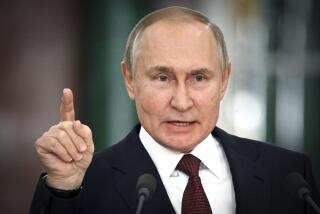Market gyrations ease with traders recalibrating Russia risk

Traders are beginning to reevaluate the effect of the Russia-Ukraine war on their strategies as the invasion grinds into its fourth week.
All eyes were on the dollar as markets reopened in Asia, when the greenback remained little changed against its major counterparts after the first weekly loss in a month, even as the U.S. Federal Reserve raised interest rates. Japan’s yen was also steady after hitting a six-year low.
Russian assets are again in the spotlight after the nation paid some dollar debts last week, a relief to investors who feared the nation would use rubles and thereby trigger a default. However, with the country on the hook for more foreign-currency payments in coming weeks, a default risk remains significant. Trading in sovereign ruble bonds is poised to restart this week even as the nation’s stock market stays closed Monday.
The auction of The One mega-mansion was held soon after Russia’s invasion of Ukraine, and those disappointed in the winning bid want a do-over.
Commodity-linked currencies are meanwhile set for further outperformance because of the high price of natural resources. Australia has banned shipments to Russia of alumina, the key ingredient for producing aluminum. Japan, a major oil importer, has asked the United Arab Emirates to increase crude exports.
Gauges of volatility in currencies, bonds and stocks have fallen in recent days as investors took heart from news that China didn’t want to see the invasion of Ukraine amid U.S. warnings against supporting Russia. With a slew of central-bank meetings also in the rearview mirror, investors will be looking to rejigger their portfolios and parse the global effects of the Fed’s first rate hike since 2018, alongside last week’s decisions from the Bank of England and Japan’s monetary authority.
The next big question for investors is how many more rate increases the Fed is planning for 2022 and what effect they will have on the U.S. economic outlook, with increased concern about recession after another inversion in the Treasury yield curve. A slew of Fed officials are set to speak this week, as are policymakers from the Bank of England and the European Central Bank.
The Bloomberg Dollar Spot Index finished last week down nearly 1%, with the greenback falling against all but one of its developed-market peers — the yen, which faces further losses after the Bank of Japan recommitted to keeping its monetary policy easy.
Meanwhile, Russian regulators are still exploring ways to reopen the country’s equity market, which has been closed since late February. The Bank of Russia will begin purchasing domestic sovereign bonds Monday in an effort to stabilize that market as it reopens.
Bloomberg writer Michael G. Wilson contributed to this report.
More to Read
Inside the business of entertainment
The Wide Shot brings you news, analysis and insights on everything from streaming wars to production — and what it all means for the future.
You may occasionally receive promotional content from the Los Angeles Times.











